Sharks fascinate many due to their size, strength, and mysterious nature. Some species are incredibly rare, making them even more intriguing. This article explores the rarest sharks, highlighting their unique characteristics, origins, and current statuses.
Great White Shark
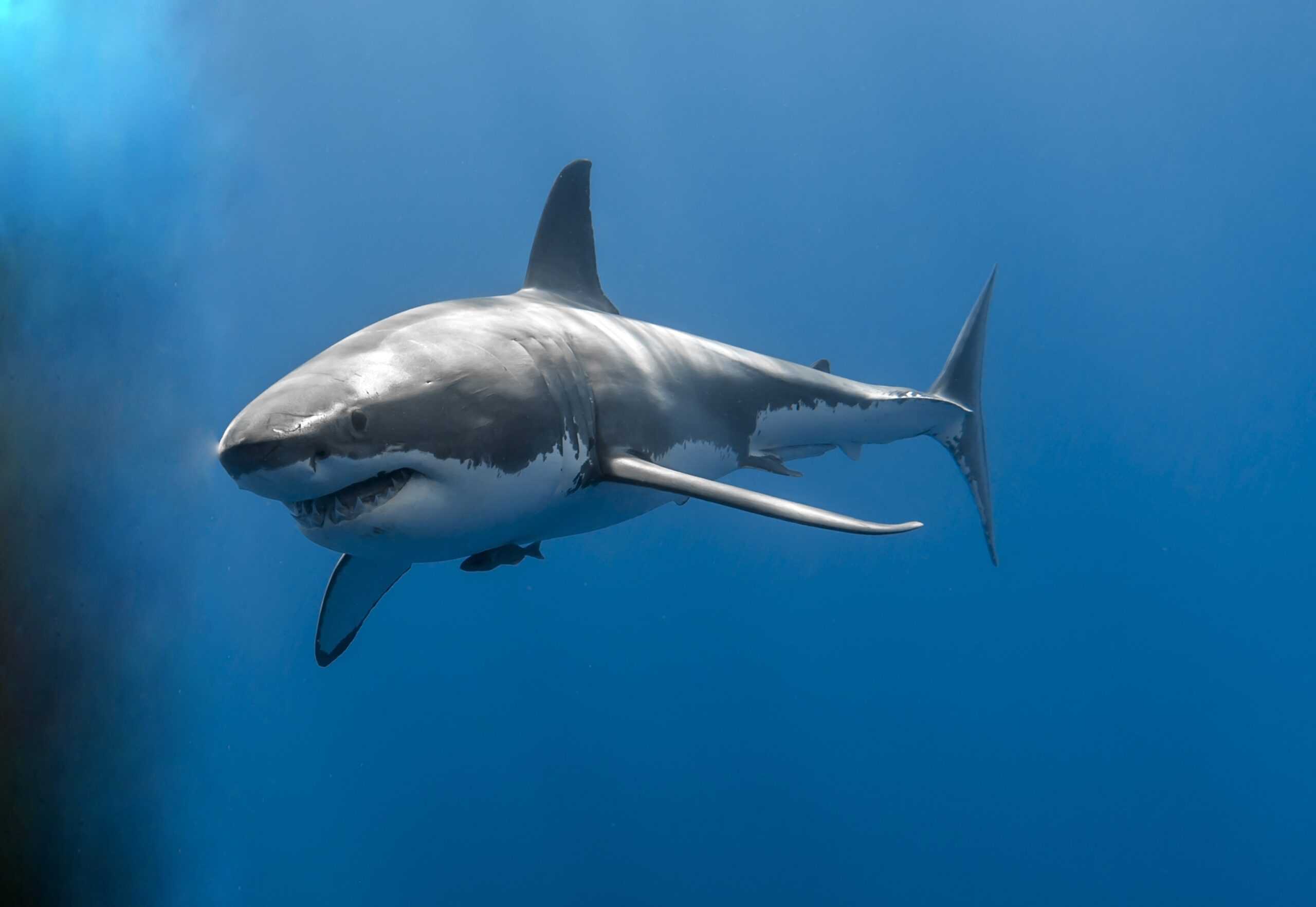
The Great White Shark, known for its formidable presence, is one of the most well-known yet moderately rare shark species. Originating from coastal waters in every major ocean, these apex predators are recognizable by their robust bodies, pointed snouts, and serrated teeth. Despite their reputation, sightings remain relatively infrequent due to their preference for deep and offshore waters. As of today, the global population of Great White Sharks is estimated to be between 3,500 and 5,000 individuals.
Great Hammerhead
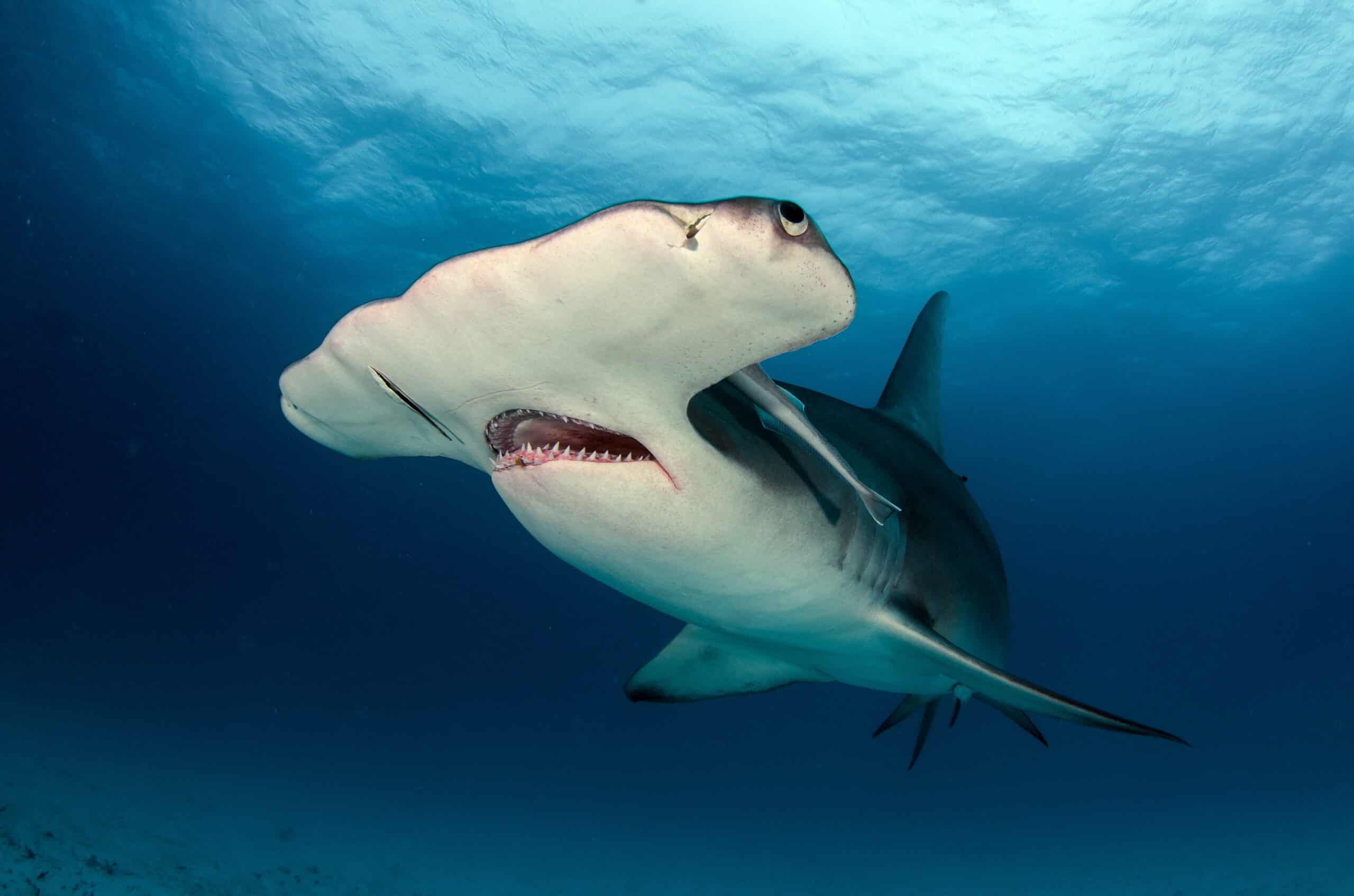
The Great Hammerhead Shark stands out with its distinctive hammer-shaped head. This unique adaptation enhances their sensory capabilities, making them proficient hunters. Found in tropical and subtropical waters worldwide, they are particularly common in coastal areas and continental shelves. Despite their widespread habitat, Great Hammerhead Sharks are considered moderately rare. Their population is difficult to estimate accurately, but they are classified as endangered due to overfishing and the high demand for their fins.
Basking Shark
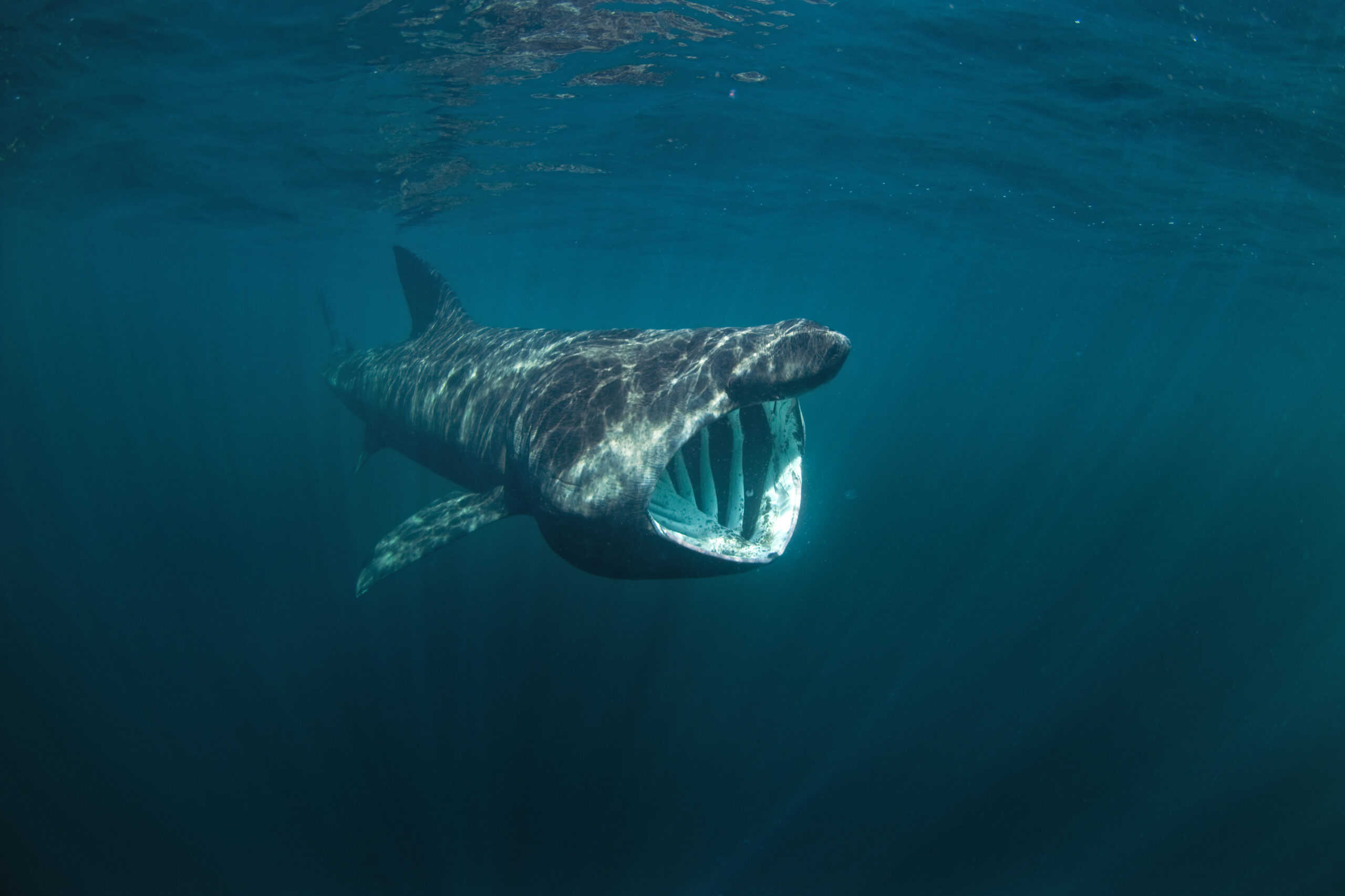
The Basking Shark, the second-largest fish in the world, is notable for its enormous size and filter-feeding habits. They inhabit temperate oceans, often spotted near the surface with their massive mouths open to consume plankton. Despite their size, they pose no threat to humans. Current estimates suggest a population of around 10,000 individuals. Basking Sharks are considered rare primarily due to historical overfishing for their oil, fins, and meat.
Dusky Shark
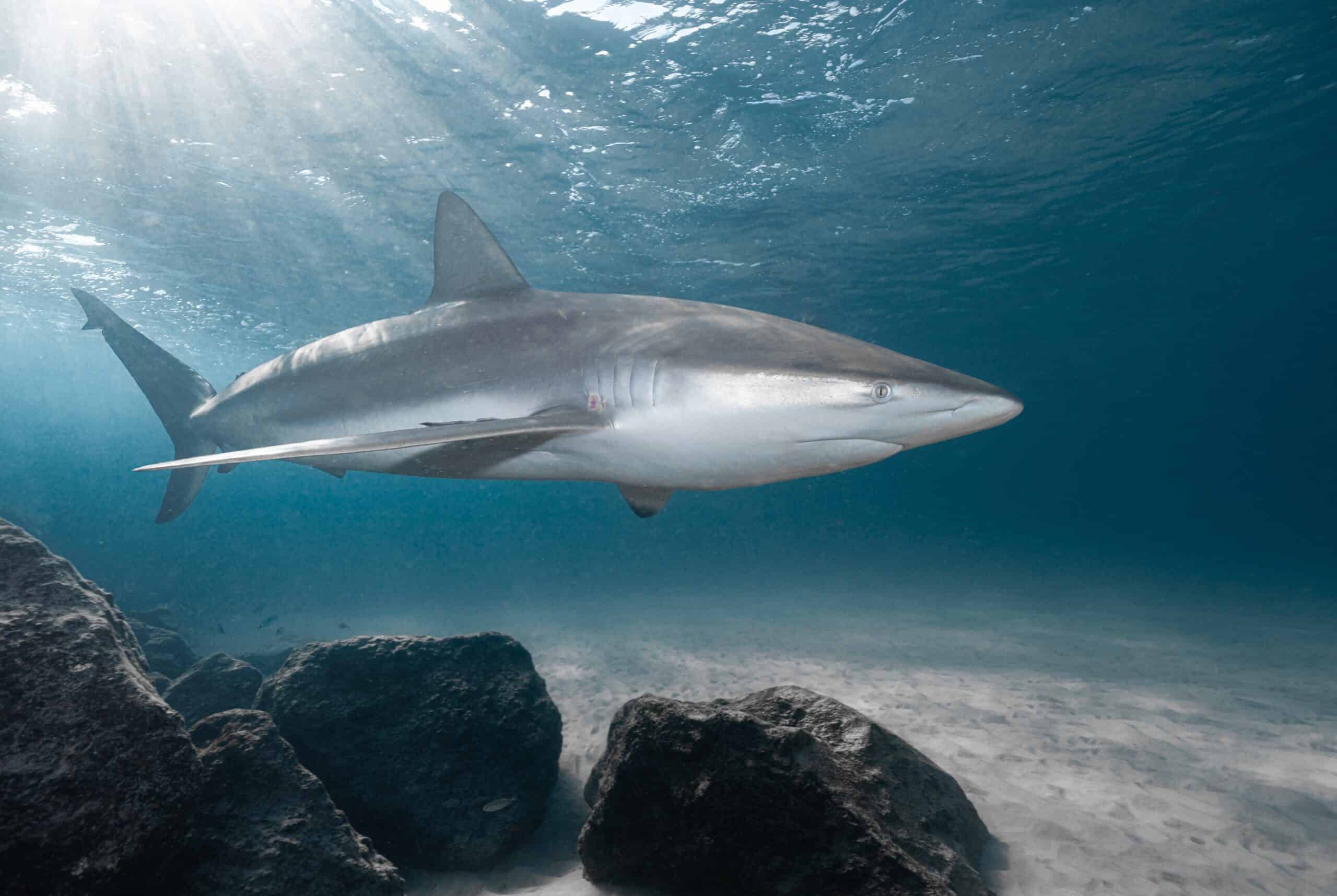
Dusky Sharks are known for their sleek, streamlined bodies and bronze coloration. They inhabit warm and temperate continental seas worldwide, often found in deep waters. These sharks are highly migratory, traveling great distances across oceans. Their population is difficult to ascertain, but Dusky Sharks are listed as vulnerable. Overfishing, particularly for their fins, and bycatch in commercial fisheries have significantly reduced their numbers.
Whale Shark

The Whale Shark, the largest fish in the ocean, is renowned for its gentle nature and impressive size. These filter feeders are found in tropical and warm temperate seas, often near the surface where plankton is abundant. Their unique spot patterns make them easily identifiable. Whale Sharks are considered moderarely rare, with an estimated population of fewer than 20,000 individuals.
Zebra Shark
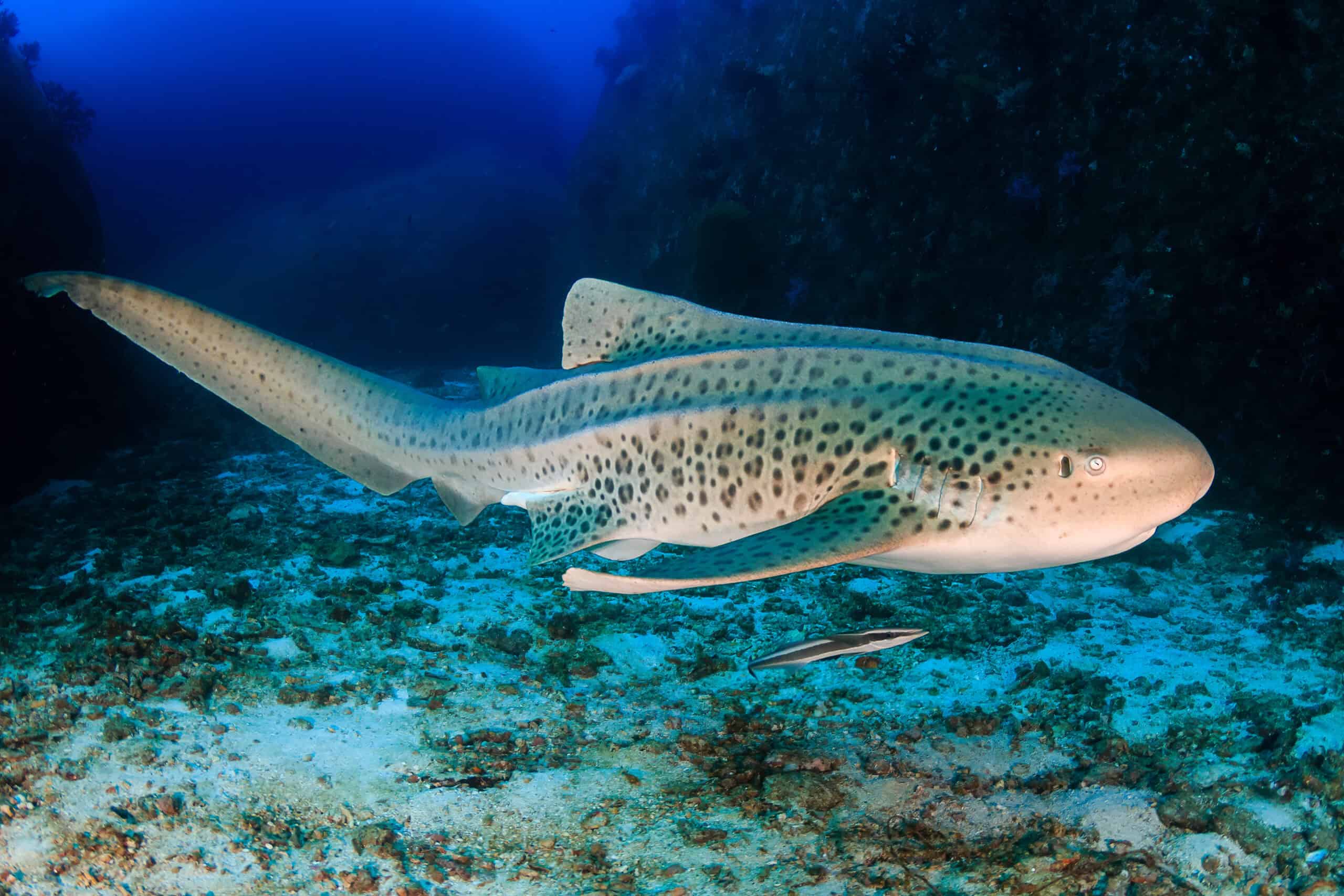
The Zebra Shark, with its distinctive striped juvenile pattern, transitions to a spotted adult appearance. Native to the Indo-Pacific region, they inhabit coral reefs and sandy flats. This nocturnal species is known for its slow, deliberate movements and preference for shallow waters. Zebra Sharks are considered rare due to habitat destruction and overfishing. The exact population is unknown, but they face significant threats from the aquarium trade and commercial fishing.
Shortfin Mako Shark
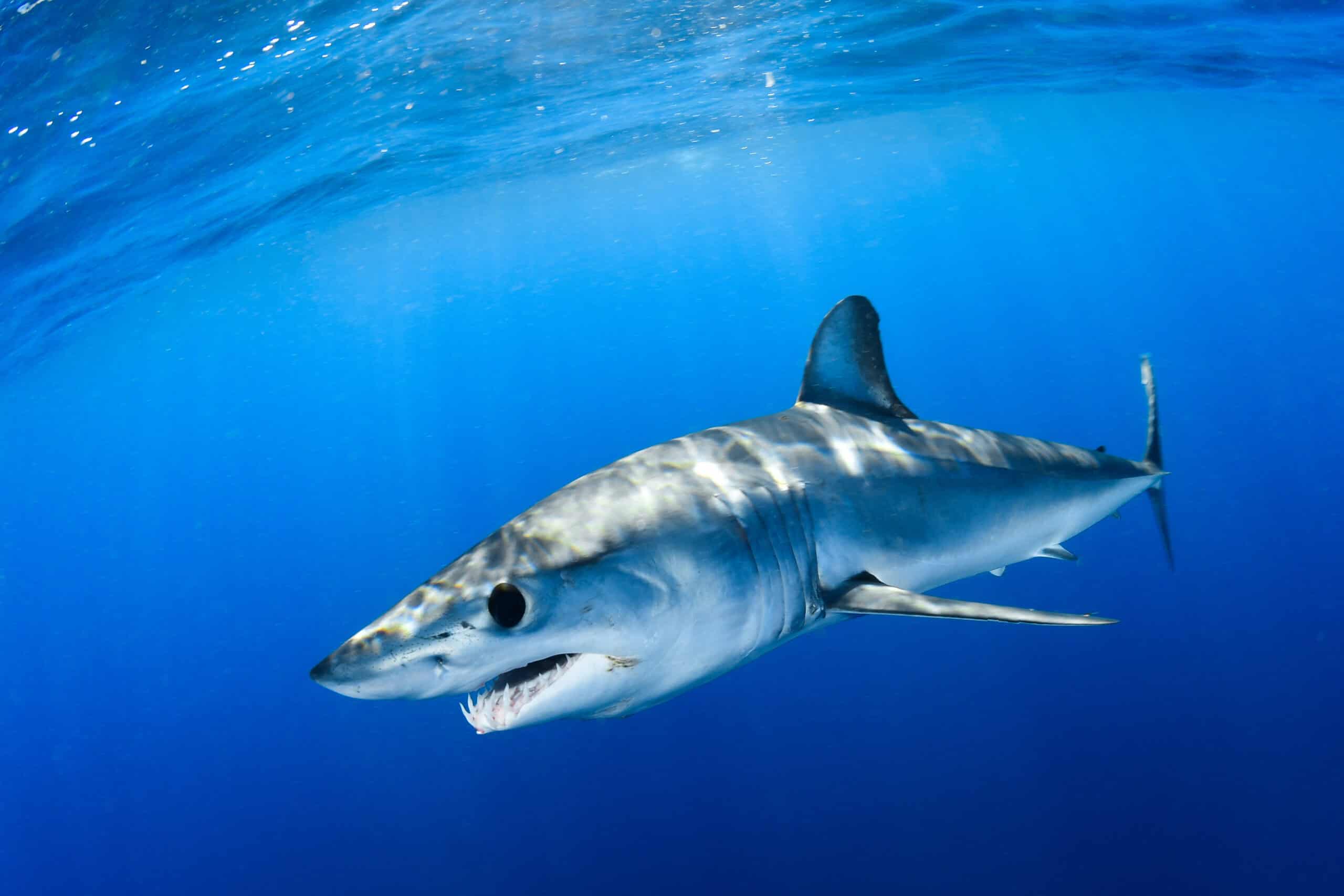
Shortfin Mako Sharks are renowned for their speed and agility, making them formidable predators. Found in temperate and tropical oceans worldwide, they prefer deep, open waters. Their streamlined bodies and long pectoral fins are adapted for rapid bursts of speed. These sharks are rare due to overfishing and bycatch in commercial fisheries. Current estimates suggest their population is in decline, with some regions reporting significant reductions.
Scalloped Hammerhead Shark
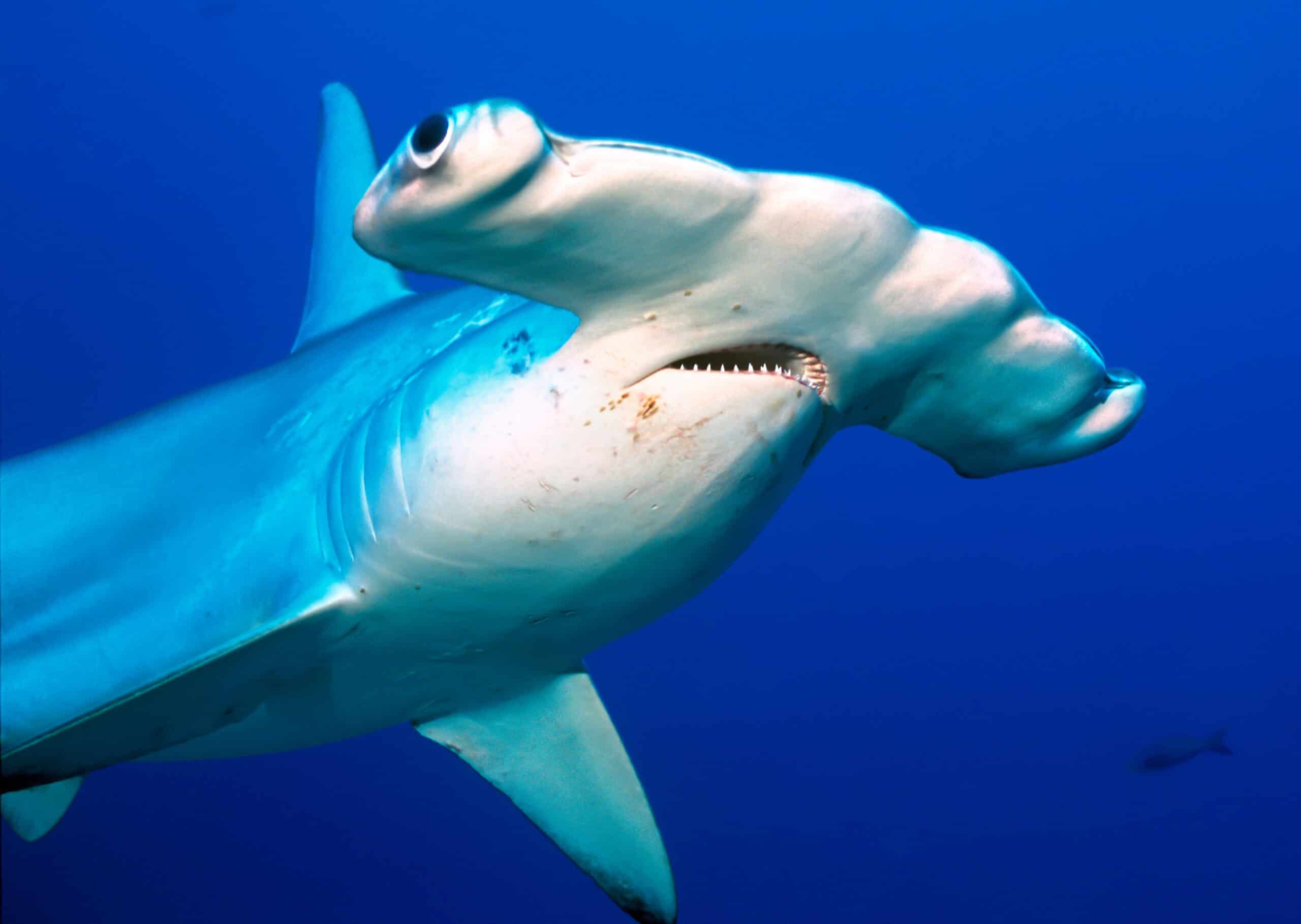
The Scalloped Hammerhead Shark is easily recognized by its scalloped-shaped head. This unique adaptation improves maneuverability and sensory perception. Inhabiting warm, tropical, and subtropical waters, they are often found in coastal areas and near continental shelves. Despite their wide distribution, Scalloped Hammerhead Sharks are endangered due to high demand for their fins and meat.
Swell Shark
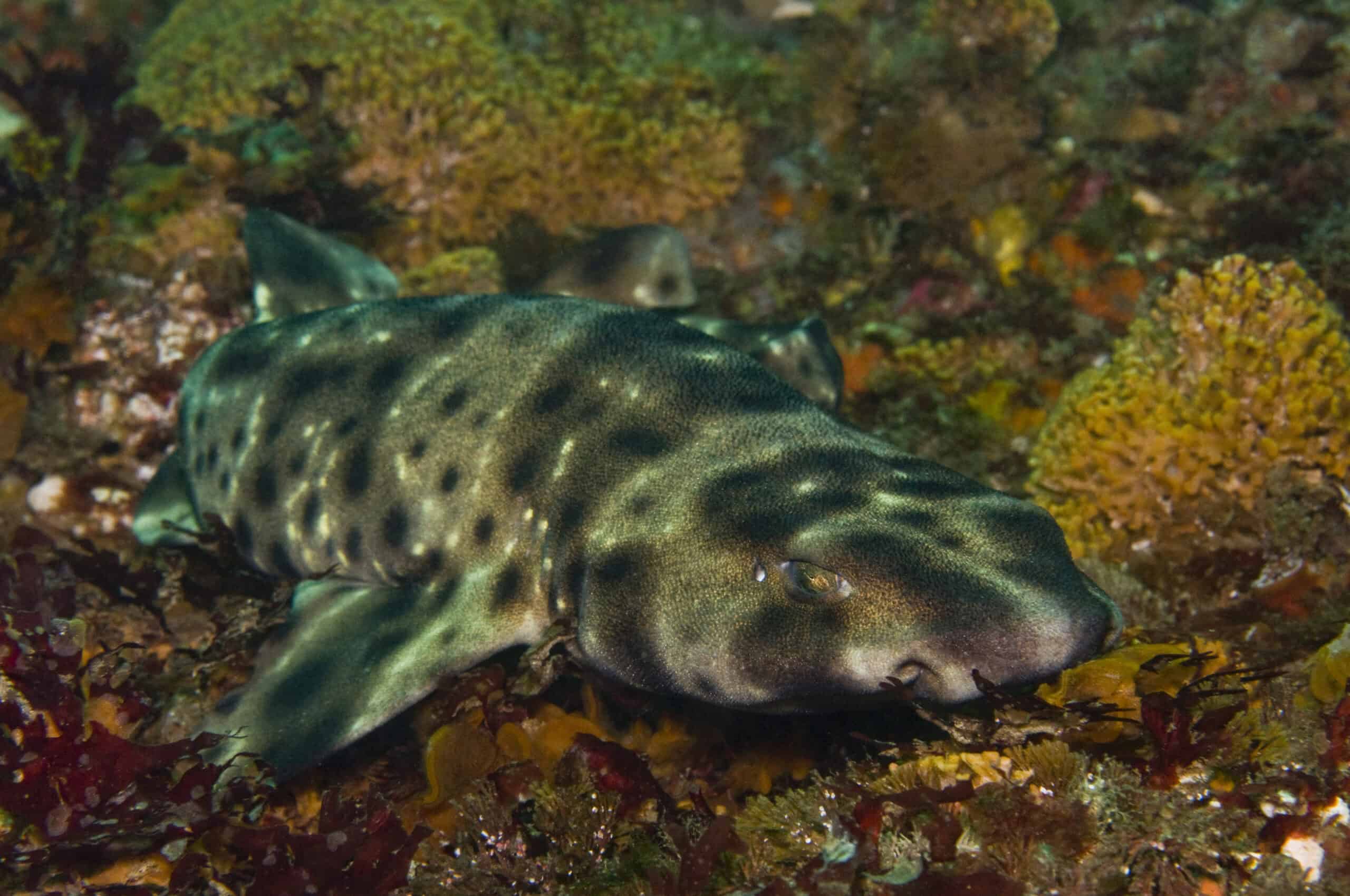
Swell Sharks are small, nocturnal sharks known for their ability to inflate their bodies as a defense mechanism. Found in the eastern Pacific Ocean, they prefer rocky reefs and kelp forests. Their distinctive coloration provides excellent camouflage. These sharks are considered rare, largely due to habitat loss and human activities. Efforts to protect their habitats are crucial for their conservation.
Striped Catshark
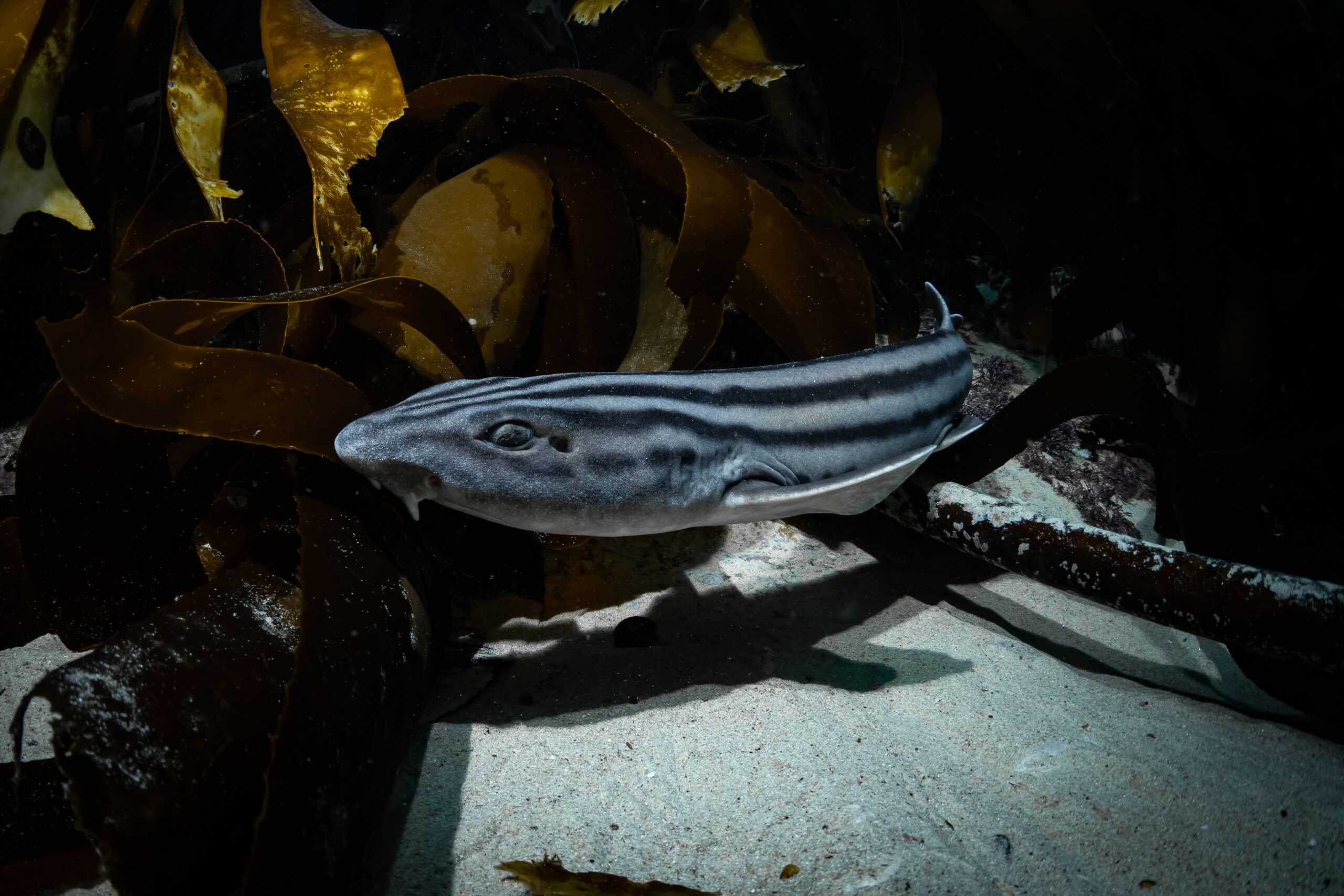
The Striped Catshark, also known as the Pyjama Shark, is named for its striking vertical stripes. Native to the waters off South Africa, they inhabit rocky reefs and kelp forests. Their nocturnal nature and unique pattern make them fascinating yet elusive. This species is rare due to limited distribution and habitat degradation. Population data is sparse, but they are not commonly encountered.
Epaulette Shark
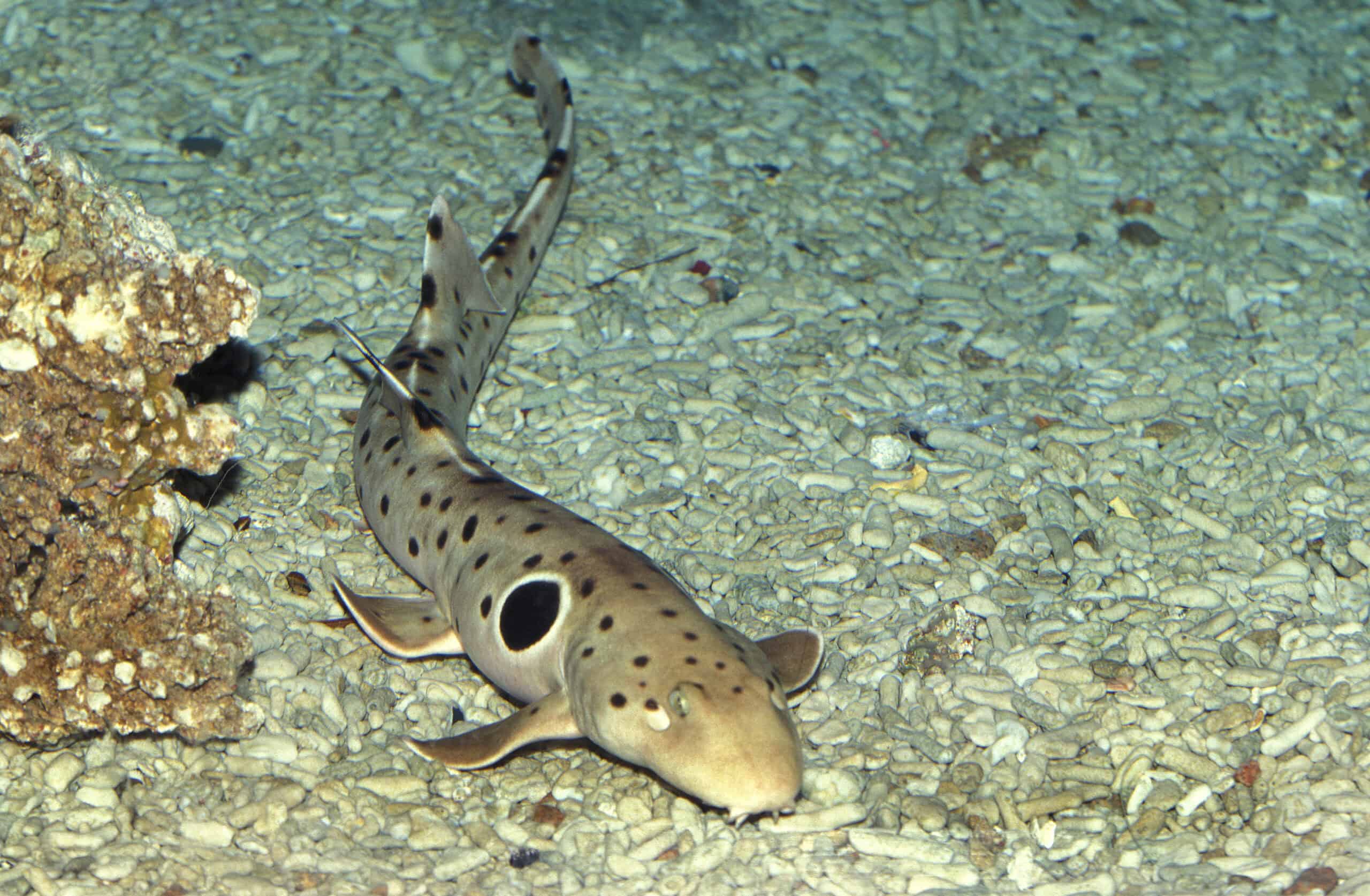
The Epaulette Shark, also known as the Carpet Shark, is famous for its ability to “walk” on its fins. Found in shallow coral reefs of Australia and New Guinea, they are adept at navigating complex underwater terrains. Their distinctive spots and elongated body make them easily recognizable. Epaulette Sharks are rare due to their specialized habitat and threats from coral reef degradation. Their population is relatively stable but faces risks from environmental changes and human activities.
Megamouth Shark
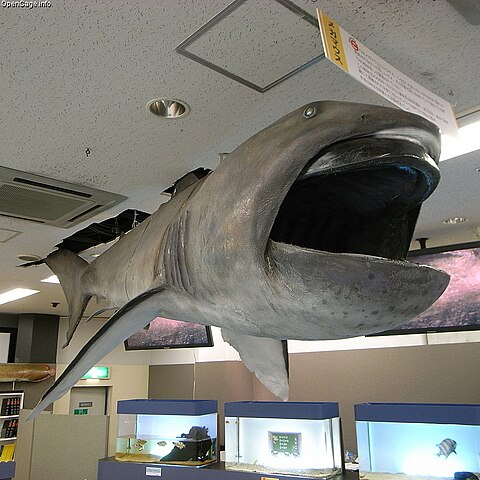
The Megamouth Shark is an elusive deep-sea giant discovered only in 1976. Found in deep waters worldwide, they are rarely seen due to their preference for depths of around 120-160 meters. This species is characterized by its large mouth and unique filter-feeding habits, similar to the basking and whale sharks. As of today, fewer than 100 sightings have been recorded, making the Megamouth Shark extremely rare. Their rarity is due to their deep-sea habitat and elusive nature.
Goblin Shark
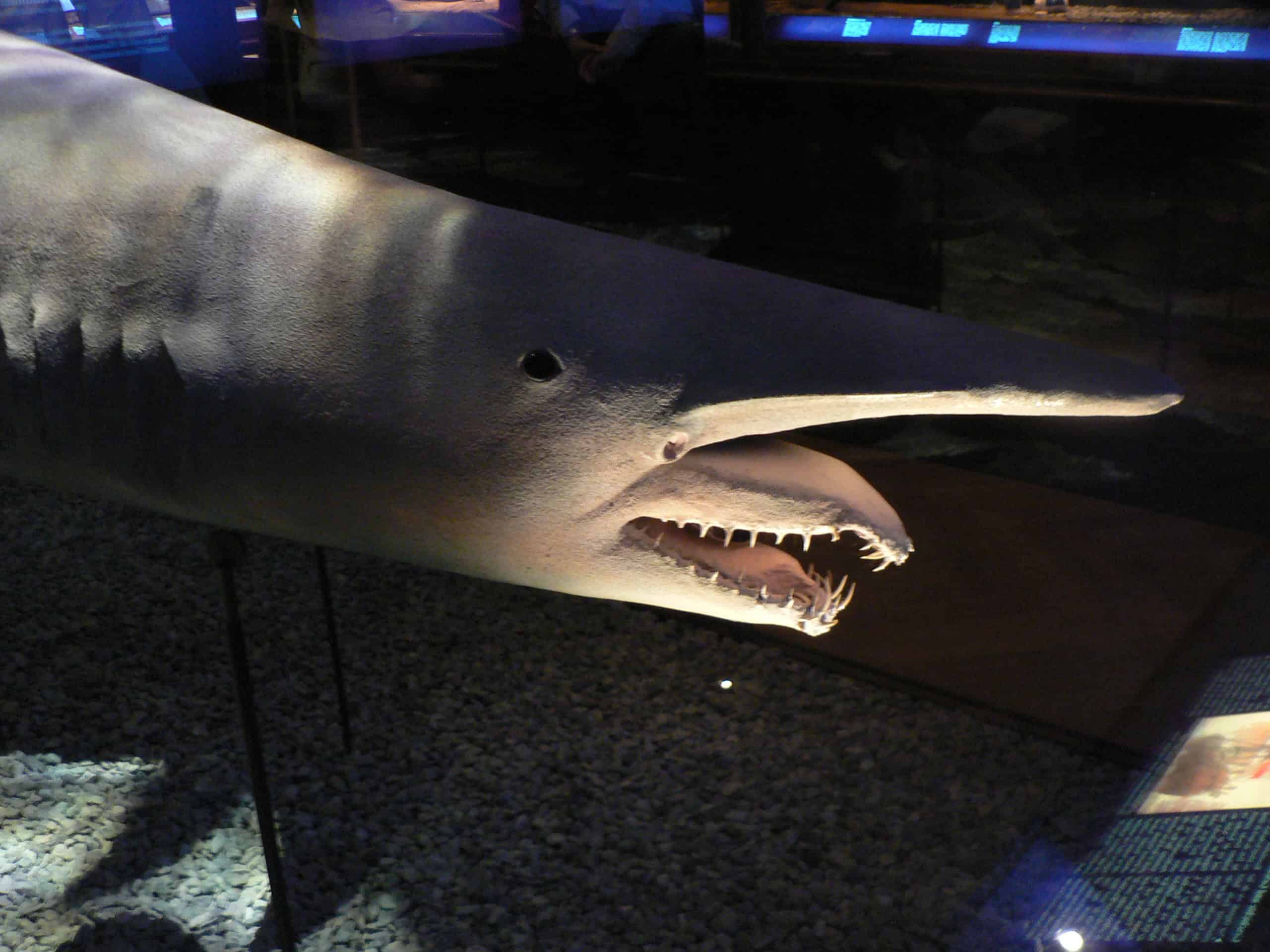
Goblin Sharks are known for their distinctive elongated snouts and protrusible jaws. Originating from the deep waters of the Atlantic, Pacific, and Indian Oceans, they are often found at depths of over 1,200 meters. Their pinkish-grey coloration and unique features make them one of the most unusual-looking sharks. These sharks are incredibly rare, with only a few specimens caught and studied. Research continues to uncover more about their biology and ecological role in the deep ocean.
Ghost Shark
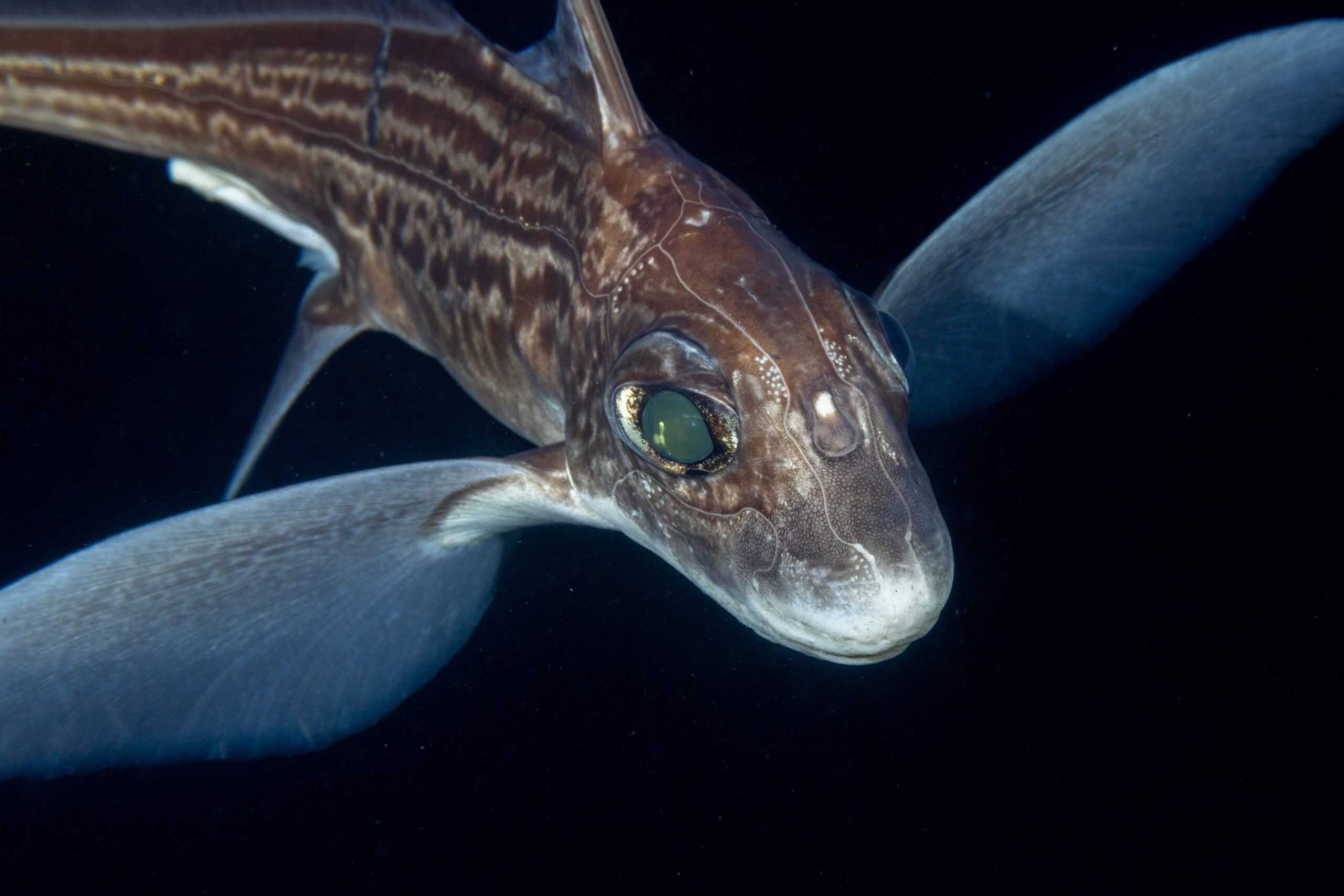
The Ghost Shark, or Chimaera, belongs to a group of cartilaginous fish related to sharks and rays. Found in deep waters around the world, they prefer depths ranging from 200 to 2,600 meters. Known for their large eyes and wing-like pectoral fins, they possess a ghostly appearance that adds to their mystique. Ghost Sharks are rarely seen, making population estimates challenging. Their rarity is due to their deep-sea environment and low reproductive rates.
Frilled Shark

The Frilled Shark is a living fossil, with origins dating back to the Cretaceous period. Inhabiting the deep waters of the Atlantic and Pacific Oceans, they are found at depths of 500 to 1,500 meters. This species is known for its eel-like body, frilled gills, and rows of needle-like teeth. Frilled Sharks are the rarest shark, with only a few sightings and captures reported. Scientists study their biology and behavior to gain insights into this ancient and enigmatic species.
This article originally appeared on Rarest.org.
More from Rarest.org
1944 Liberty Half Dollar Value Guide

Once dubbed as the most beautiful coin in US history, the 1944 Walking Liberty half dollar is undoubtedly a much sought-after collector’s item. The coin is made of silver, plus it has an unusual size for a half-dollar. Read More.
1943 Lincoln Steel Penny Value Guide

The 1943 Lincoln steel penny is perhaps the most unique type of penny coin in the entire series of Lincoln penny. For one, it is the only year when the Lincoln penny was struck in steel. Read More.
16 Ultra-Rare American Banknotes

Collecting rare banknotes is a fascinating hobby that offers a glimpse into the history and artistry of currency from around the world. These unique pieces not only tell stories of economic history but also showcase intricate designs and significant historical figures. Read More.
